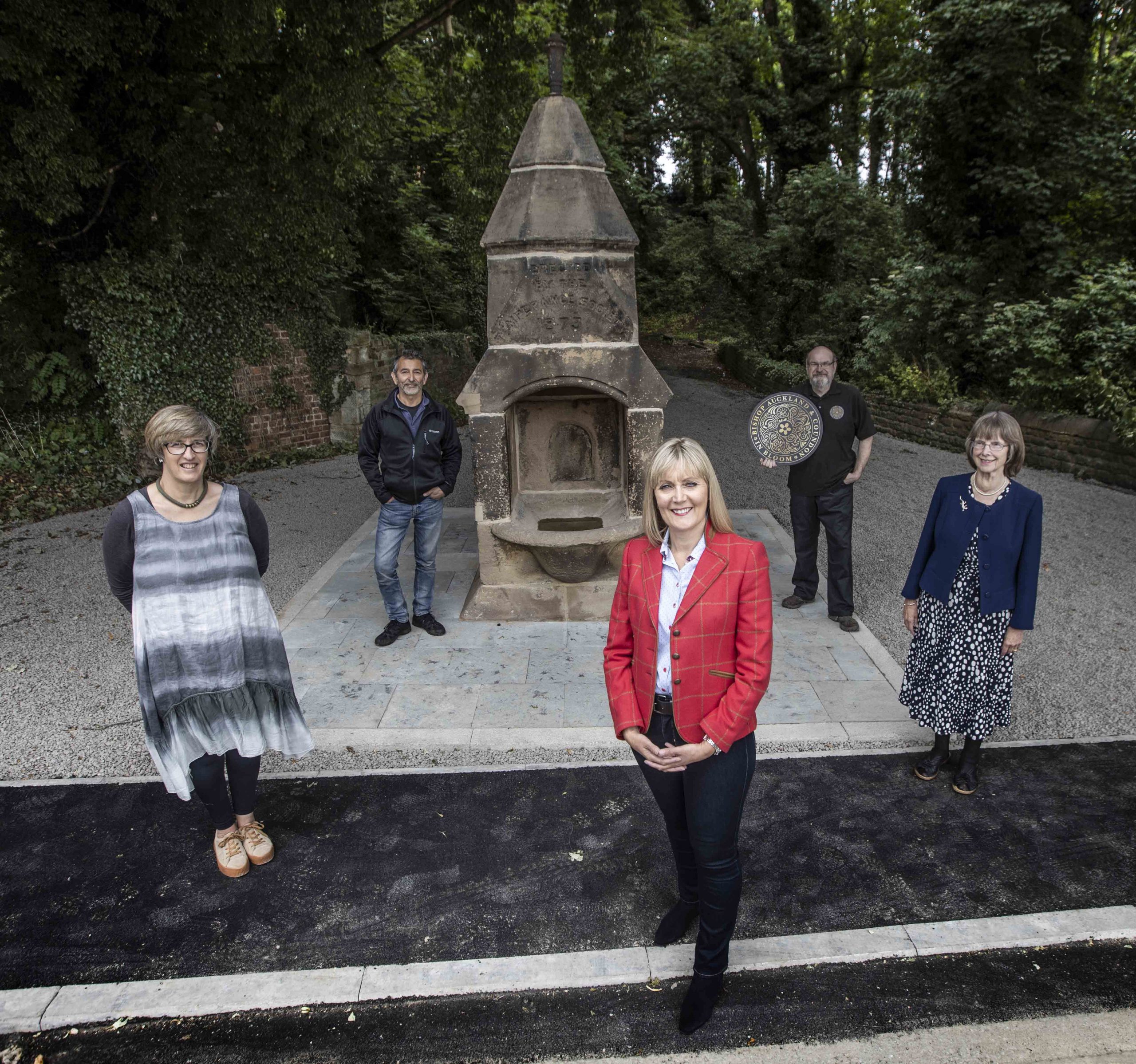A 19th century water fountain built by a movement against alcohol has been returned to its former glory as part of a heritage project.
The Castle Chare fountain in Bishop Auckland, erected in 1873 by the Temperance Society, has been lovingly restored through the town’s Heritage Action Zone (HAZ), which is funded by Durham County Council and Historic England.
Work to the Grade II listed fountain and its surrounds is one of 44 projects being delivered through the HAZ, a five-year partnership to revitalise the historic market town and regenerate it as an even more vibrant place for local people, businesses and visitors. The HAZ has helped some significant developments within Bishop Auckland to come to fruition; supporting financially the likes of the renovation of the former Co-Operative Bank building on Newgate Street by an orthodontics company, and the restoration of the West Mural Tower at the Auckland Project.
The work has seen a new interpretation board put in close to the fountain and follows long-term efforts by the council in partnership with Bishop Auckland and Coundon in Bloom Group and local residents to enhance the area.
The interpretation board tells how the temperance movement was very active in the 1870s. In Bishop Auckland the Temperance Hall was built along with three temperance hotels while ‘Cocoa Palaces’ were set up in shopping areas to provide alternatives to alcoholic establishments. The board explains that the fountain, which is no longer operational, was aimed at animals as well as people, as was its sister structure which was located in an area where there were many public houses.
Cllr Carl Marshall, the council’s Cabinet member for economic regeneration, said: “It’s been fascinating to learn about the history of the temperance movement in Bishop Auckland and why this fountain was built.
“We’re really pleased that through the Heritage Action Zone we’ve been able to work with Historic England to give a new lease of life to the fountain and make some improvements to the area in which it stands.
“Our hope is that the fountain will provide a fitting centrepiece to this newly revitalised area and that the interpretation board will help residents and visitors to learn more about its history.
“In turn this and the 43 other projects being delivered through the Heritage Action Zone can only help in attracting more people to Bishop Auckland and the wider county.”
Jules Brown, historic places advisor at Historic England, said: “We are very pleased that this work has been completed successfully since the easing of the lockdown restrictions. Restoring the fountain and its surrounding area will play a small but significant role in re-energising Bishop Auckland’s town centre and revealing its fascinating past.”
Cllr Joy Allen, chair of Bishop Auckland and Coundon in Bloom and the council’s Cabinet member for transformation, culture and tourism, said: “This is truly a community inspired heritage project that has not only achieved its initial aims of restoring the Temperance water feature, it has also led to the inception of the award winning Bishop Auckland and Coundon in Bloom group which went on to win Gold and topped the Best Large Town category in the Northumbria in Bloom Awards in 2019.
“I am truly grateful to local residents, led by Mario Rea for alerting us to this project in the first place and to Bishop Auckland Heritage Action Zone and Historic England for restoring this impressive water fountain.”
The restoration of the area was done in three phases with the first the implementation of a traffic order to stop cars parking around the fountain.
Phase two involved work to the fountain which included realigning and repairing stone, stone repairs, pointing and cleaning.
Phase three saw work to the area around the fountain to enhance its appearance and make it easier for people to explore on foot. This saw paving and kerb stones installed and limestone chippings laid. This phase also saw the interpretation board installed and directional signs put up, with the former including information about the fountain, surrounding area and the Temperance movement.
The council and Historic England drew on funding earmarked for the Heritage Action Zone as part of an agreement reached during the process which led to planning permission being granted for a housing development in the town.
The restoration follows work the council’s Clean and Green team has carried out with
Bishop Auckland and Coundon in Bloom Group and residents of nearby streets, The Dell and The Willows, to enhance the environment of the area over a prolonged period. This included weeding, putting up bird boxes, clearing rubbish and planting Spring flower bulbs.
To find out more about the Heritage Action Zone, visit www.durham.gov.uk/haz











